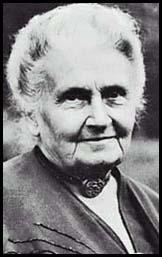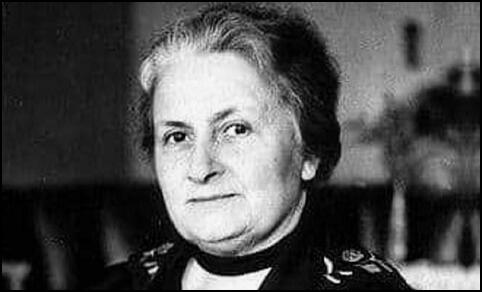Maria Montessori

Maria Montessori was born in Italy on 31st August, 1870. After graduating from medical school in 1896 Montessori became the first woman in Italy to become a doctor.
Montessori returned to university in 1901 to study psychology and philosophy. Three years later she became professor of anthropology at the University of Rome.
In 1906 Montessori left the university in order to work with sixty young working class children in the San Lorenzo district of Rome. Soon afterwards she founded the Casa dei Bambini (Children's House) where she developed what became known as the Montessori method of education. This method of teaching was based on spontaneity of expression and freedom from restraint.
In 1913 Montessori went to the United States where with the help of Alexander G. Bell founded the Montessori Educational Association in Washington. She also joined with Alice Paul, Lucy Burns, Mabel Vernon, Olympia Brown, Mary Ritter Beard, Belle LaFollette, Helen Keller, Dorothy Day and Crystal Eastman to form the Congressional Union for Women Suffrage (CUWS).
Montessori established a research institute in Spain and in 1919 she began a series of teacher training courses in London. In 1922 she was appointed a government inspector of schools in Italy.

An opponent of Benito Mussolini, Montessori was forced to leave Italy in 1934. She moved to Spain until General Francisco Franco and his nationalist forces defeated the republicans in the Spanish Civil War.
Montessori established training centres in the Netherlands (1938), India (1939) and England (1947). Maria Montessori, who was nominated for the Nobel Peace Prize in 1949, 1950 and 1951, died in Noordwijk, Holland, on 6th May, 1952.

